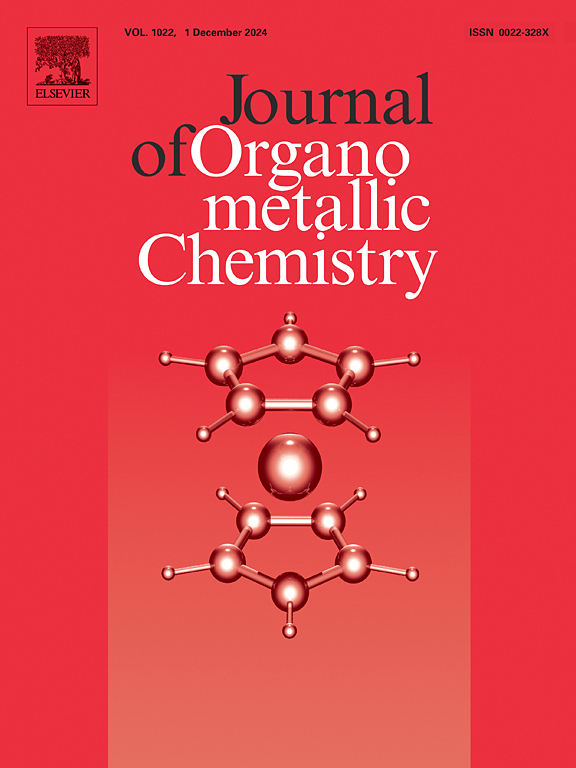Design, synthesis, and structural characterization of a novel Schiff base: Copper ion sensing and molecular docking studies for potent inhibition of nitric oxide synthase (iNOS)
IF 2.1
3区 化学
Q3 CHEMISTRY, INORGANIC & NUCLEAR
引用次数: 0
Abstract
A novel Schiff base compound, THSB, was synthesized and thoroughly characterized using 1H and 13C NMR, mass spectrometry, and single-crystal X-ray diffraction. Motivated by the well-documented chelating and biological properties of Schiff bases, the compound was evaluated for dual functionality. UV–Visible spectroscopic studies demonstrated its high selectivity and sensitivity towards Cu(II) ions, with a low detection limit of 6.28 × 10⁻⁹ M, showcasing its potential as an efficient colorimetric sensor. Furthermore, molecular docking studies revealed a strong binding affinity of THSB towards inducible nitric oxide synthase (iNOS), with a binding energy of –9.44 kcal/mol, suggesting its potential role in modulating nitric oxide levels relevant to cancer therapy. Hydrophobic interactions were found to play a key role in the compound's binding mechanism. These results highlight THSB as a promising bifunctional molecule for both metal ion detection and therapeutic applications

新型希夫碱的设计、合成和结构表征:铜离子传感和分子对接研究对一氧化氮合酶(iNOS)的有效抑制
合成了一种新的希夫碱化合物THSB,并利用1H和13C NMR、质谱和单晶x射线衍射对其进行了表征。由于希夫碱的螯合和生物学特性,该化合物被评估为双重功能。紫外可见光谱研究表明,它对Cu(II)离子具有很高的选择性和灵敏度,检出限为6.28 × 10⁻(9)M,显示了它作为高效比色传感器的潜力。此外,分子对接研究显示THSB对诱导型一氧化氮合酶(iNOS)具有很强的结合亲和力,结合能为-9.44 kcal/mol,提示其在调节与癌症治疗相关的一氧化氮水平方面具有潜在作用。发现疏水相互作用在化合物的结合机制中起关键作用。这些结果突出了THSB作为一种有前景的金属离子检测和治疗应用的双功能分子
本文章由计算机程序翻译,如有差异,请以英文原文为准。
求助全文
约1分钟内获得全文
求助全文
来源期刊

Journal of Organometallic Chemistry
化学-无机化学与核化学
CiteScore
4.40
自引率
8.70%
发文量
221
审稿时长
36 days
期刊介绍:
The Journal of Organometallic Chemistry targets original papers dealing with theoretical aspects, structural chemistry, synthesis, physical and chemical properties (including reaction mechanisms), and practical applications of organometallic compounds.
Organometallic compounds are defined as compounds that contain metal - carbon bonds. The term metal includes all alkali and alkaline earth metals, all transition metals and the lanthanides and actinides in the Periodic Table. Metalloids including the elements in Group 13 and the heavier members of the Groups 14 - 16 are also included. The term chemistry includes syntheses, characterizations and reaction chemistry of all such compounds. Research reports based on use of organometallic complexes in bioorganometallic chemistry, medicine, material sciences, homogeneous catalysis and energy conversion are also welcome.
The scope of the journal has been enlarged to encompass important research on organometallic complexes in bioorganometallic chemistry and material sciences, and of heavier main group elements in organometallic chemistry. The journal also publishes review articles, short communications and notes.
 求助内容:
求助内容: 应助结果提醒方式:
应助结果提醒方式:


